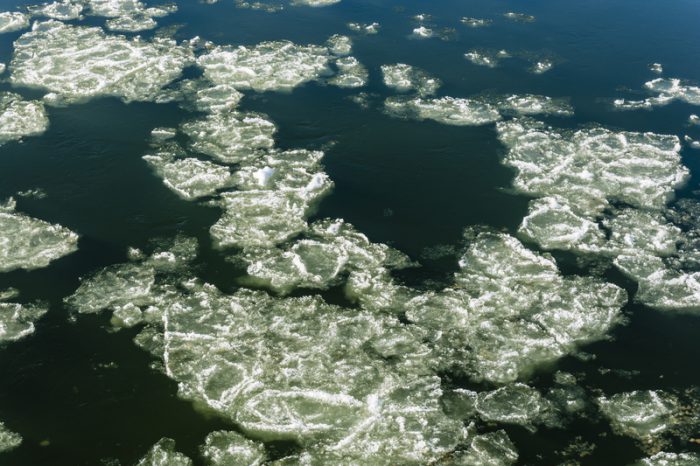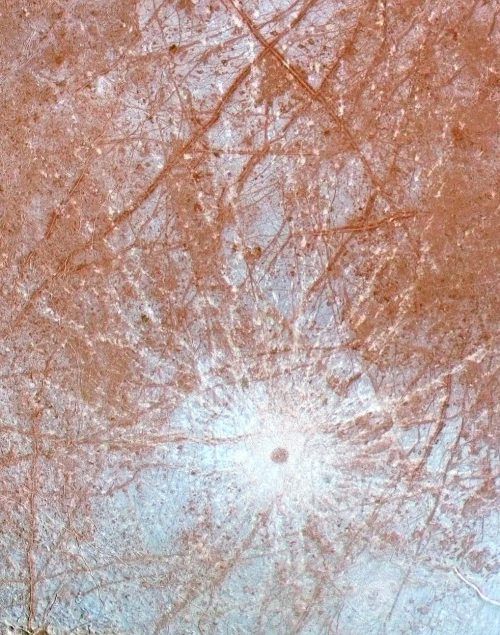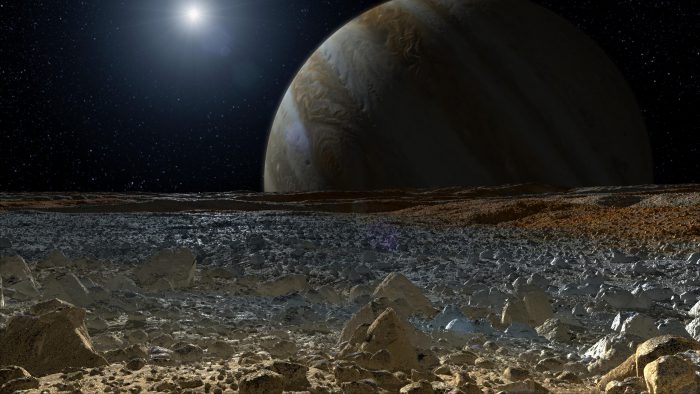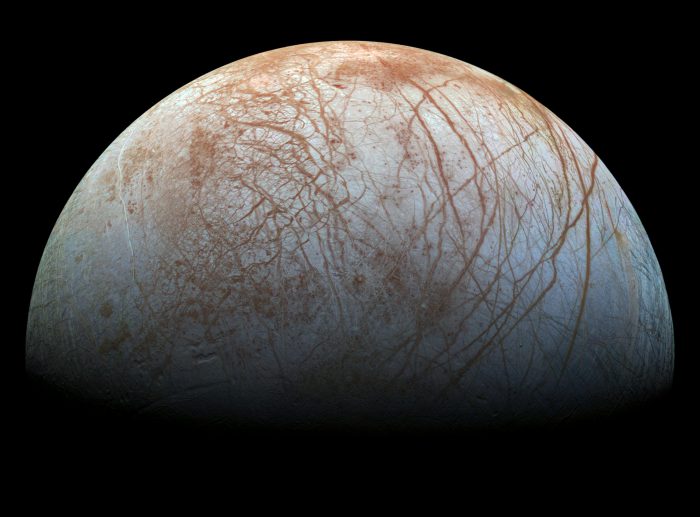As scientists have learned more about the solar system, they've come to find that the best places to look for potential life is not on other planets.
It's on moons.
Yes, Mars might have once looked quite similar to Earth and could have supported life many millions of years ago. Maybe there is even some microscopic life hidden somewhere there now?
But right now as we speak, there are moons in the solar system that are literally home to vast oceans. One of them is estimated to have twice as much water on it than is found on Earth!
That moon is called Europa, the smallest of the four Galilean moons of Jupiter. From the outside, Europa is a desolate ball of ice. But scientists believe that underneath that hard frozen shell is miles and miles of ocean.
And a new study claims that the ocean may feature a type of underwater snow that falls upward and rests on the bottom of this ice shell. Sounds too strange to be true? We think it's worth an investigation, don't you?
(This is a bit of a long ride, but bear with us and we'll go to some neat places! Let's go!)
What is Europa like?

This diagram shows the suspected interior of four incredible moons: Jupiter's Io and Europa, and Saturn's Enceladus and Titan. (NASA)
Before we get to that strange snow though, we should talk a bit more about Europa and what scientists believe it is made of.
Slightly smaller than our Moon, Europa is covered by an ice shell that is about 15 to 25 km (10 to 15 miles) thick. Underneath that ice is thought to be an ocean that is 60 to 150 km (40 to 100 miles) deep. For comparison, the deepest part of the ocean on Earth is only 11 km (6.8 miles) deep.
At the bottom of Europa's ocean, there are likely hydrothermal vents where heat, minerals, and energy from inside this moon's core would seep up into the water.
To investigate this special world further, NASA is sending a probe called the Europa Clipper in 2024. This probe will orbit Europa and use special radar to look through the ice and into the deep ocean below. Amazing!
What is frazil ice?

Frazil ice can form in rivers and lakes as well as the open sea. (ID 65504608 © Paweł Gubernat | Dreamstime.com)
Now let's get back to that 'snow that falls up'!
The snowy crystals that scientists think might be all throughout Europa is actually found in some places on Earth, too. It is called frazil ice, and is found underneath ice sheets in places like Antarctica.
Frazil ice is described as a 'fluffy' sort of ice crystal that forms in cold, still water. After forming, it floats up (remember, ice floats in water). It either can then bob along at the surface, or collect on the bottom of ice sheets. This new study, led by researchers at the University of Texas, suggests that the same kind of phenomenon could be found underneath the massive moon-wide ice shell of Europa, too.
Making a connection between this far-off world and ours makes some sense. After all, parts of Antarctica are likely the closest thing to Europa on Earth—miles of thick ice floating above a deep, dark ocean. If it happens here, why not there?
Why would it matter?

A closeup of the surface of Europa. Imagine trying to look through that to see the ocean below! (NASA)
So let's say lots of frazil ice is everywhere underneath the ice sheets of Europa. Why would that matter?
Because of how it is formed, frazil ice has much less salt in it that normal seawater ice. So if the ice shell of Europa is made of a lot of frazil ice, then overall it is full of a lot less salt than if it was just made of 'frozen ocean'.
Okay, so the ice shell is maybe less salty that we once thought. Again, why would that matter?
Remember that radar that the Europa Clipper was going use to look into the moon? Well, it turns out that radar reacts differently depending on how much salt is in the ice that it is looking through.
In other words, to make sure the radar that they use is going to work properly, engineers need to know how salty that ice is going to be. In fact, the same researchers from the University of Texas who are behind this new study are the ones who are designing this special radar.
Talk about doing your research!
What might they find?

This is an artist's concept of the surface of Europa with Jupiter in the background. (NASA)
Maybe after reading this, you have another question about Europa.
What kind of life can you find under miles of ice in a pitch black ocean?
Good question! For sure, the surface of Europa would be uninhabitable. There's barely any atmosphere and the surface is constantly being blasted by deadly radiation from Jupiter. But the ocean below would be quite safe from this radiation. Of course, it also would have no energy from the Sun either, so no photosynthesis (using energy from the Sun to make food).
Instead, if there is life in Europa, it would need to rely on something called chemosynthesis. This is making food from chemical reactions. It sounds pretty wild, but in truth, these reactions might be how life started here on Earth!
Even today, there are whole ecosystems powered by chemosynthesis that exist on the ocean floor, near hydrothermal vents. If you'd like to read more about these places, go here. You just might be looking at a preview of life on another world!
 This may not look like it from the outside, but Europa is a leading candidate for extraterrestrial life. (NASA)
This may not look like it from the outside, but Europa is a leading candidate for extraterrestrial life. (NASA)









